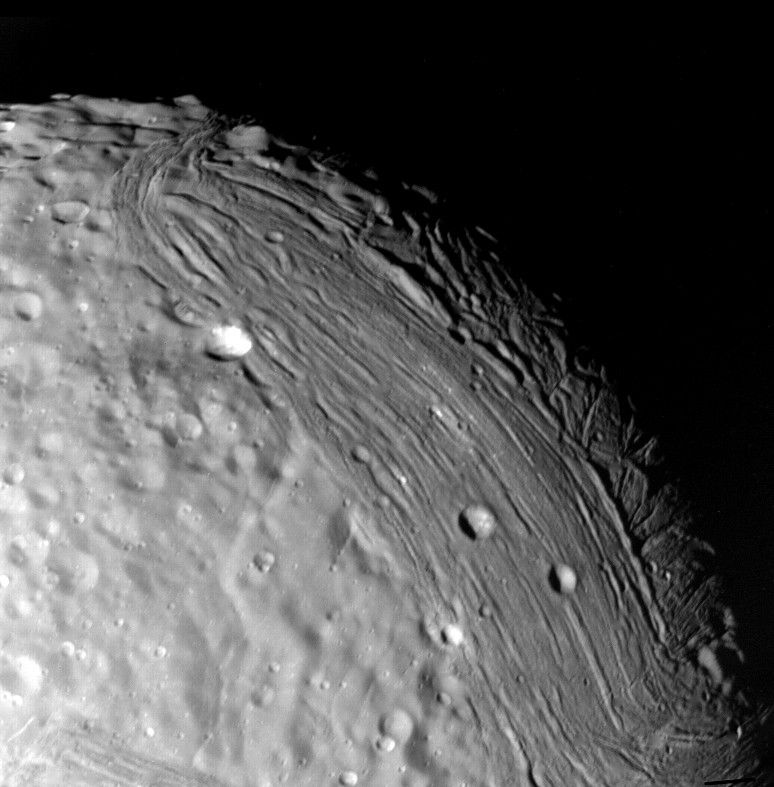Miranda
Overview
Like Frankenstein's monster, Miranda looks like it was pieced together from parts that didn't quite merge properly. At about 500 km in diameter, it's only one-seventh as large as Earth's moon, a size that seems unlikely to support much tectonic activity.
Yet Miranda sports one of the strangest and most varied landscapes among extraterrestrial bodies, including three large features known as "coronae," which are unique among known objects in our solar system. They are lightly cratered collections of ridges and valleys, separated from the more heavily cratered (and presumably older) terrain by sharp boundaries like mismatched patches on a moth-eaten coat. Miranda's giant fault canyons are as much as 12 times as deep as the Grand Canyon. Due to Miranda's low gravity and large cliffs, a rock dropped off the edge of the highest cliff would take a full 10 minutes to reach the foot of the cliff.
Scientists disagree about what processes are responsible for Miranda's features. One possibility is that the moon may have been smashed apart in some colossal collision, and the pieces then haphazardly reassembled. Another, perhaps more likely, scenario is that the coronae are sites of large rocky or metallic meteorite strikes which partially melted the icy subsurface and resulted in episodic periods of slushy water rising to Miranda's surface and refreezing.
Miranda's surface is nearly as bright as that of Ariel, the brightest of the larger Uranian moons, but none of them reflect more than about a third of the sunlight that strikes them. This suggests that that their surfaces have been darkened by carbonaceous material. Miranda's brightness increases dramatically when it is in opposition―that is, when the observer is directly between it and the Sun. This indicates that its surface is porous, casting reflectivity-decreasing shadows when illuminated at other angles. This texture could be the result of eons of micrometeorite strikes tilling the soil.
All of Uranus' larger moons, including Miranda, are thought to consist mostly of roughly equal amounts of water ice and silicate rock. Unlike the other four main Uranian satellites, Miranda's orbit is slightly inclined.
Of the five Uranian moons known before Voyager 2 visited the planet, Miranda is the smallest and closest to the planet.
Discovery
Miranda was discovered in telescopic photos of the Uranian system by Gerard P. Kuiper on Feb. 16, 1948 at the McDonald Observatory in western Texas. It was the last moon of Uranus to be discovered prior to Voyager 2's visit in 1986.
How Miranda Got its Name
Miranda was named for the daughter of Prospero in William Shakespeare's play, "The Tempest."

































